Posted by Elena del Valle on February 20, 2015
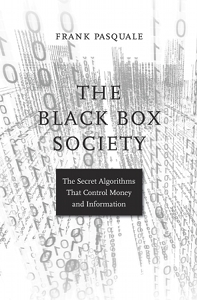
The Black Box Society
Photos: Harvard University Press
Every day, a corporate or government system gathers data, openly and in secret, about people across America. From purchasing habits to driving our lives and movements physical and virtual are increasingly subject to voyeurism, storage, sharing and analysis without our consent or knowledge. In The Black Box The Secret Algorithms That Control Money and Information (Harvard University Press, $31.50) Frank Pasquale, professor of law, University of Maryland, explores issues related to corporate data gathering, and asks who tracks the activities of the data gatherers, their own data; and what happens to the data they gather about us.
He points to the proprietary methods, gag rules and nondisclosure agreements government agents and corporations hide with, leaving everyone else exposed. Using anonymizing software, he says, may draw unwanted attention from authorities. The same laws that aggressively protect the data gatherers’ secrecy is “increasingly silent when it comes to the privacy of persons,” he says in the book.
“Many of the firms I write about in the book try very hard to keep their practices secret. I had to comb many reports in order to find another leaks, litigation documents, and other ‘peeks’ inside their black boxes,” said Pasquale when asked by email about the biggest challenge the book presented for him.
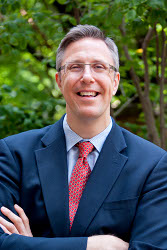
Frank Pasquale, author, The Black Box Society
“I have heard from so many people who’ve been victimized by black box processes,” he said, when asked what was the most unexpected result of writing and publishing the book. “There was a man who found his credit damaged for years, because he lost one small stage of a lawsuit against an obviously fraudulent actor. There are people who can’t find jobs because some mysterious algorithm or reporting system keeps blackballing them. But there are also many who fight back, and I really find inspiration from their stories.”
In the book, he asks: Should our own citizens be on secret watchlists without their knowledge or any opportunity to defend themselves? Should a credit card company be entitled to raise the interest rate of a couple seeking marriage counseling? Should they be told? Should powerful search engines and social media sites be entitled to take down legal websites and books without informing the public? Should the Federal Reserve print money to save banks after their executives behave irresponsibly, and hide the printing from the public?
The 304-page hardcover book, published this year, is divided into six chapters: Introduction—The Need to Know, Digital Reputation in an Era of Runaway Data, The Hidden Logics of Search, Finance’s Algorithms: The Emperor’s New Codes, Watching (and Improving) the Watcher, and Toward an Intelligible Society. It features 83 pages of end notes.
To the question of what the average person can do to protect her or himself until, and if, the situation is remedied, and the transparency you call for becomes a reality? he replied, “I’d say: support smaller, more local economic actors. At least there are people at them who can respond to complaints and try to fix things. I’ve found that, at many large firms, algorithmic processes truly become faceless…there’s no one to appeal to.”
In closing he says, the data gathering situation and society with a black box approach “has become dangerously unstable, unfair and unproductive;” and that it is up to society to establish the rules that lead us to a safe environment and a stable economy. Pasquale is an affiliate fellow at Yale Law School’s Information Society Project, and a member of the Council for Big Data, Ethics, and Society.
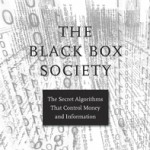
Click to buy The Black Box Society
Comments:
Filed Under: Books
Posted by Elena del Valle on January 23, 2015
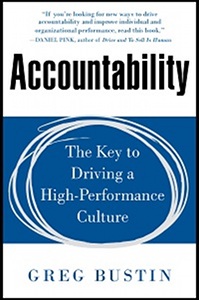
Accountability
Photos: Bustin & Co
If accountability is “Doing what you said you would do within the time frame you agreed to do it*” and only a tiny fraction of management executives surveyed believed their companies did a good job executing their strategic plan, what does that say about the accountability at their companies? Greg Bustin, author, Accountability: The Key to Driving a High-Performance Culture (McGraw-Hill, $28) believes accountability is the greatest challenge businesses face.
In his 293-page hardcover book, published in 2014, he discusses the role of accountability in the business environment. The book is divided into ten chapters and an appendix.
Establishing clear expectations, dealing with problems immediately and leaving emotions behind are important steps when a leader holds others accountable, he says.
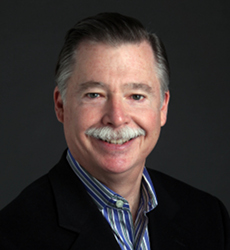
Greg Bustin, author, Accountability
He goes on to recommend that the way to accountability begins with a purpose. Once executives identify what they want to do, what they can do and what they’re willing to do, they can hold themselves accountable. Only then can they create a culture where accountability drives performance and hold others accountable. He defines seven characteristics he believes are necessary for efficient accountability: character, unity, learning, tracking, urgency, reputation and evolving.
Bustin, chief executive officer, Bustin & Co., is a Dallas based business and leadership consultant. Prior to this book, he wrote Take Charge!, Lead the Way, and That’s a Great Question.
*From Accountability.
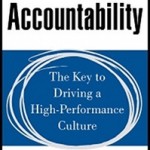
Click to buy Accountability
Comments:
Filed Under: Books
Posted by Elena del Valle on January 9, 2015
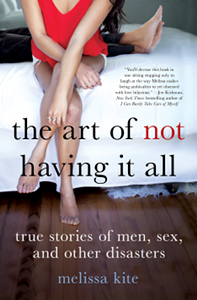
The Art of Not Having It All
Photos: St. Martin’s Press Publicity
Can a career woman find fulfillment alone? Is it possible to be single and happy? Melissa Kite thinks it is. She is single and dedicated to her work. She is convinced she is unusual for not seeking to have everything in her life. She is content with dedicating most of her energy to her career even if if it means there is no time left for the pursuit of a family. In The Art of not Having It All: True Stories of Men, Sex and Other Disasters (Thomas Dunne Books, $24.99), published this month, she discusses her life experiences and views.
In the Preface, she says she felt like “a total freak” and “…like the only woman in the world who was struggling to keep one ball in the air, and dropping that most of the time.” She prefers, she explains, focusing on doing one thing at a time rather than juggling a career and a family; and concludes that being single and lonely while not having the stereotypical everything at once such as kids, the perfect husband and a suburban home is not so bad after all.
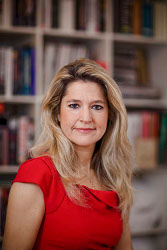
Melissa Kite, author, The Art of Not Having It All
The 278-page hardcover book is divided into ten chapters. Kite is a freelance journalist and a columnist for The Spectator in the United Kingdom.
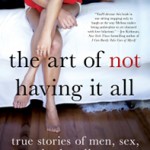
Click to buy The Art of Not Having it All
Comments:
Filed Under: Books
Posted by Elena del Valle on December 5, 2014
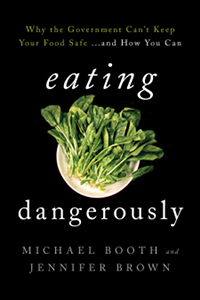
Eating Dangerously
Photo: Rowman & Littlefield
This year, an estimated 50 million Americans will get sick from food they eat, 100,000 of them will need to be hospitalized and 3,000 will die, according to Eating Dangerously Why the Government Can’t Keep Your Food Safe… and How You Can (Rowman & Littlefield, $24.95). In 2011, 33 people died of food poisoning from one instance of listeria contaminated cantaloupe alone, say the authors. What is happening to our food between the farm and the table?
In the book, Michael Booth, a former health care writer for The Denver Post, and Jennifer Brown, an investigative reporter with the same newspaper, set out to answer some of the most relevant questions regarding food safety in our country. They strive to provide an understanding of the food networks’ functionality, where it works and where it fails, and offer advice on ways to avoid food borne illnesses. The propose readers seek a balance where they become “skeptical, but cynical; aware, but not hysterical.”
The 185-page hardcover book published this year is divided into an Introduction, 10 chapters and two appendices in two main parts: Should we be afraid of our food? And How to feed your family safely and sanely. The appendices feature resources for additional information and tips on how to eat safely. It features multiple pages of end notes.
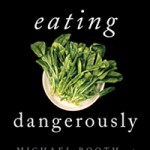
Click to buy Eating Dangerously
Comments:
Filed Under: Books
Posted by Elena del Valle on November 21, 2014
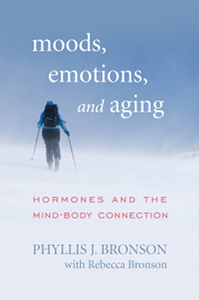
Moods, Emotions, and Aging Hormones
Photo: Rowman & Littlefield
In Moods, Emotions, and Aging Hormones and the Mind-Body Connection (Rowman & Littlefield, $29.39) Phyllis J. Bronson, Ph.D. with Rebecca Bronson, Ph.D. address the relationship between hormones and an aging woman’s moods. According to the book, she believes hormone replacement with bioidentical hormones that mimic those naturally produced in the human body and nutrients help aging women control their moods and find wellness.
She is also convinced that women need to accept themselves regardless of their age. Many of her patients, she says, describe finding joy in midlife by identifying a balance of hormones and vitamins, minerals and amino acids. She points out that despite common usage of the same words to describe natural and synthetic hormones they are different and have profoundly different effects on a woman’s body.
The 179-page hardcover book published in 2013 is easy to read and at times soulful. It is divided into an Introduction, Appendix and eight chapters: In Defense of Estrogen, The Truth About Progesterone, Mood Chemistry, The Connection Between Body Type and Hormones, Weaving the Web: How Hormones Are Central to the Female Psyche, Sexuality, Emotions and Relationships, and Diseases of Aging/Adventures in Aging.
Phyllis Bronson, who has a doctorate in biochemistry, is president of Biochemical Consulting and The Biochemical Research Foundation. Her research focuses on the biological impact of molecules on mood and emotion. She relies on her research on human identical hormones in her work with women suffering from hormone-based mood disorders. After working in the biochemistry industry for years, Rebecca Bronson dedicated herself to writing and yoga. As of the writing of the book she was teaching yoga and managing a yoga studio.
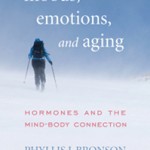
Click to buy Moods, Emotions, and Aging
Comments:
Filed Under: Books
Posted by Elena del Valle on November 7, 2014
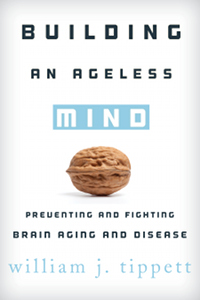
Building an Ageless Mind
Photo: Rowman & Littlefield
Just as mental stimulation is important in our youth our brain requires cognitive stimulation as we age. So says William J. Tippett, P.h.D., assistant professor, University of Northern British Columbia. He believes it is important to stimulate as much of the brain as possible to maintain that organ healthy as adults grow older. He proposes that adults nearing their aging years learn about their brain to develop a neuroprotective plan.
In Building an Ageless Mind: Preventing and Fighting Brain Aging and Disease (Rowman & Littlefield, $32.58) he addresses ways to strive for good cognitive ability as people and their brains age. The author believes achieving such brain health requires readers to be proactive and knowledgeable enough to recognize when abnormalities arise. In the book, he explores cognitive training, exercise and diet and their effect on the brain.
The 239-page hardcover book published in 2013 is divided into four main sections: Cognitive Stimulation, Aging and Disease, Healthy Living As We Age, and The Futuristic Brain. He addresses the importance of eating the right foods to nourish the brain. He points to, for example, the effects of vitamins A, C, D, and E as well as reveratrol. He also says physical activity can maintain and enhance brain function. Being an athlete is required, he says, just being physically active.
Tippett is the principal investigator, founder and director of the Brain Research Unit at the University of Northern British Columbia. He is also associate member of the Centre for Stroke Recovery at Sunnybrook Health Sciences Centre in Toronto, Canada.
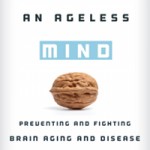
Click to buy Building an Ageless Mind
Comments:
Filed Under: Books
Posted by Elena del Valle on October 24, 2014
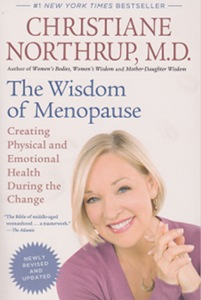
The Wisdom of Menopause
For 25 years Christiane Northrup, M.D. was a practicing physician in obstetrics and gynecology, identifying issues and treatments for patients. Now she dedicates “the second half of my life to illuminating all that can go right.” Her efforts may be welcome by many among the 48 million women in the United States in midlife, undergoing perimenopause or menopause.
She believes menopause is “a mind/body revolution, which brings tremendous opportunity for happiness” instead of the often described problem phase of women’s aging packed with a collection of symptoms to be fixed. In 1994, she shared her views in Women’s Bodies, Women’s Wisdom, her first book which went on to become a New York Times Best Seller.
In Women’s Bodies, Women’s Wisdom Creating Physical and Emotional Health During the Change (Bantam Books, $22), also a New York Times Best Seller with 1.25 million copies sold in 16 languages, she discuses her conviction that many physical ailments are born from lifestyle choices and emotional concerns. The 745-page book, most recently updated in 2012, is divided into 14 chapters in which she discusses topics such as the brain, breast health, hormones, pelvic health, food and supplements, healthy bones, sex and sleep, and heart health.
In the book, she indicates menopause leads to a new stage filled with changes, both physical and emotional. They are not, as thought in the past century, a sign of inevitable aging and decline. Instead, they lead to a woman’s transformation, and a time when she must examine her life closely and choose who she wishes to be all over again. She points to a 1998 Gallup survey at the North American Menopause Society in which more than half of respondents between 50 and 65 indicated they were living the happiest time in their lives.
She is convinced that as women go through their midlife adjustments they are drawn less to a traditional supportive family role and more to new adventures and pursuits outside of their home life. That is in contrast to men in the same age group, the author says, because they in turn seek fulfillment in relationships more than in their work, a reversal of their approach in previous years.
According to her website, Northrup has more than 4.4 million books in print, in 24 languages. Her book Mother-Daughter Wisdom was voted Amazon’s top book of the year in parenting and mind/body health.
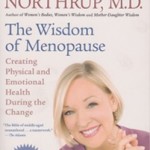
Click to buy The Wisdom of Menopause (Revised Edition)
Comments:
Filed Under: Books
Posted by Elena del Valle on October 17, 2014
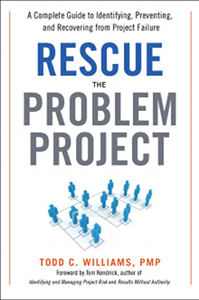
Rescue the Problem Project
Photos: Visibility Strategist
For years Todd C. Williams was the informal go to person when a problem project needed attention. He would discuss the project issues with the team in charge and pass his ideas back to the decision makers. They would in turn review them and eventually, if he succeeded in convincing them, approve them. In time, he fine tuned his process and went up the ranks. Now he is president and executive consultant at eCameron, Inc., a project rescue company based in the state of Washington.
In his book, Rescue the Problem Project: A Complete Guide to Identifying, Preventing, and Recovering from Project Failure (AMACOM, $39.95), he explains how he and his team identify a problem project, and how they recover it before it fails or has to be canceled. He shares with readers his process for rescuing red projects that focuses on root cause correction and prevention. He points out that 65 percent of projects fail to meet their goals and 25 percent of projects require cancellation.
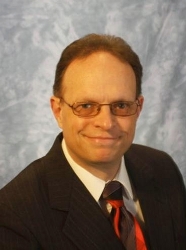
Todd C. Williams, author, Rescue the Problem Project
The 277-page hardcover book published in 2011 is divided into twenty chapters and six main parts: Understanding the Process and Realizing a Problem Exists, Auditing the Project: Understanding the Issues, Analyzing the Data: Planning for Project Recovery, Negotiating a Solution: Proposing Workable Resolutions, Executing the New Plan: Implementing the Solutions, and Doing It Right the First Time: Avoiding Problems That Lead to Red Projects. He relies on case studies, mostly from manufacturing and information technology projects, to illustrate his steps and process. The end of each chapter includes a summary or Chapter Takeaway.
In the book, he identifies aspects he relies on in his problem solving: the team holds the answers, a strong team can solve most problems, remaining involved with the team is essential, and it is important to remain involved with the team in order to resolve the situation. He also describes his recovery process steps: realizing there’s a problem, figuring out what the problem is, identifying the causes for the problem and the possible solution, negotiating a solution everyone can agree on, and implementing the steps to solve the problem. He points out that it is essential for management to recognize that there is a problem before any of the other steps can be taken and the project rescued.
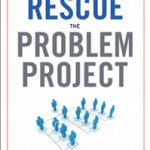
Click to buy Rescue the Problem Project
Comments:
Filed Under: Books
Posted by Elena del Valle on October 9, 2014
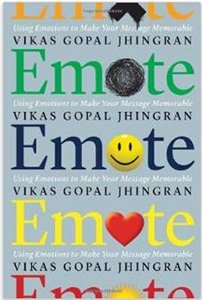
Emote
Photos: Career Press
As manager of a team of engineers at Shell Oil Company Vikas Gopal Jhingran, a Massachusetts Institute of Technology-trained engineer and researcher with a Ph.D., had demonstrated his engineering competence frequently, he says; but when it came to client presentation he was out of his comfort zone. A combination of his introverted personality and his immigrant status made public speaking a challenge hard to overcome until he determined to apply himself to improve his verbal communication skills.
By 2007 he became Toastmasters International World Champion of Public Speaking, and the second person of Asian origin to achieve such a distinction. In Emote: Using Emotions to Make Your Message Memorable (Career Press, $15.99), a 223-page softcover book published this year, he shares the insights he gleaned from his personal journey with others, especially introverts and immigrants like himself.
The book is divided into fifteen chapters, an Introduction and an Epilogue spread into three main sections: The Fundamentals, The Mechanics of Speaking, and Other Benefits of Good Communication Skills. The author shares, among other insights and ideas, his experience, emotion based approach and the speeches that led to his public speaking win in 2007.
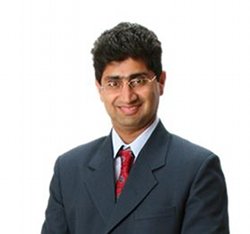
Vikas Jhingran, author, Emote
One of the speeches was about his decision, while living in Texas, to have his mother in India arrange his marriage for him. The second speech was born of a feeling within him that he was not living life to the fullest and his desire to inspire the audience to live life for the moment. The idea behind the speeches was to make his point by moving the audience. Connecting at an emotional level with the audience, he believes, is the secret to his success.
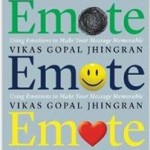
Click to buy Emote
Comments:
Filed Under: Books
Posted by Elena del Valle on September 19, 2014
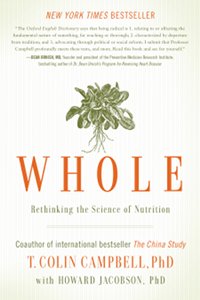
Whole: Rethinking the Science of Nutrition
Photo: BenBella Books
T. Colin Campbell, Ph.D. has spent a lifetime studying nutrition, and Howard Jacobson, Ph.D. is a health educator and ecological gardener. They believe a whole food plant based diet without added fat, salt, or refined carbohydrates (such as sugar and white flour) is the essential foundation for a healthy life. In Whole Rethinking the Science of Nutrition (BenBella Books, $16.95) they explore the evidence to support their conclusions, including their belief that people’s eating habits haven’t changed despite the availability of information about nutrition to support their arguments.
Whole follows on the heels of the publication of The China Study (see Health, nutrition experts examine comprehensive China nutrition study), a previous book authored by Campbell and his son, which addressed similar issues and conclusions about nutrition. The 328-page softcover book is divided into 19 chapters and four main parts: Enslaved by the System, Paradigm As Prison, Subtle Power and Its Wielders, and Final Thoughts.
The authors examine the concepts of whole versus reductionist biology, where whole biology views the body as more than the sum of its parts while reductionist biology focuses on the individual organs or aspects of the human anatomy. They are convinced reductionism is the primary view today and part of the reason society, medicine and social policy favor reductionist nutrition.
They propose that readers change the way they view nutrition, medicine and health, taking into account the complexity of the human body and expanding their views to encompass reductionist and wholist approaches. The reasons society clings to old reductionist approaches to eating, they say, relate to a long standing belief in the healthy nature of animal proteins, the common view that the body is made up of a set of diverse and separate parts, and a profit oriented reductionist system.

Click to buy Whole
Comments:
Filed Under: Books


































